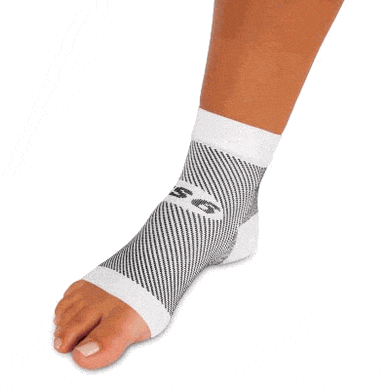20gt; Images For Plantar Fasciitis Treatment Night Splints
Plantar Fasciitis: Symptoms, Treatment and Prevention

In this last article in the two part series on Plantar Fasciitis, Brad Walker talks about the normal symptoms of this painful sports injury as well as the most effective treatments once diagnosed. Brad also outlines some very important preventative measures that are crucial in avoiding Plantar Fasciitis. A foot injury such as plantar fasciitis generally occurs in a single foot. Bilateral plantar fasciitis is strange and tends to be the consequence of a systemic arthritic condition that is exceptionally rare among athletes. Males suffer from a somewhat higher occurrence of plantar fasciitis than females, perhaps as a result of greater weight in conjunction with greater quickness and surface impact, as well as less versatility in the foot.Typically, the victim of plantar fasciitis experience pain upon increasing after sleep, particularly the first step out of foundation. Such pain is securely localized at the bony landmark on the anterior medial tubercle of the calcaneus. In some cases, pain may prevent the sportsman from walking in a standard heel-toe gait, triggering an unusual walk as means of compensation. Less common regions of pain are the forefoot, Calf msucles, or subtalar joint.After a limited period of walking with this type of feet injury, the pain usually subsides, but returns again either with vigorous activity or prolonged standing or walking. Around the field, an improved gait or unusual stride design, along with pain during running or jumping activities are tell-tale symptoms of plantar fasciitis and should be given fast attention. Further indications of the damage include poor dorsiflexion (lifting the forefoot off the ground) credited to a shortened gastroc complex, (muscles of the leg). Crouching in a complete squat position with the sole of the feet flat on the floor can be utilized as a test, as pain will preclude it for the athlete experiencing plantar fasciitis, triggering an elevation of the heel due to tension in the gastroc complex.TreatmentTreatment of plantar fasciitis may also be a slow and annoying process. A program of rehabilitation should be undertaken by making use of someone certified and proficient in the affliction. Typically, plantar fasciitis will demand at least six weeks or more to six months of conservative attention to be completely remedied. Should such efforts not provide alleviation to the athlete, more hostile procedures including surgery may be looked at.The initial goals of physical remedy ought to be to increase the passive flexion of the feet and improve versatility in the foot and ankle, eventually leading to a full return to normal function. Prolonged inactivity in vigorous sports is often the price to be paid for thorough recovery. Half measures can result in a persistent condition, in some instances severely restricting athletic ability.As a large amount of time is spent in bed during sleeping hours, it is important to ensure that the bed sheets at the foot of the foundation do not constrict the feet, resulting in plantar flexion in which the foot is bent straight out with the toes pointing. This constricts and in so doing shortens the gastroc complex, worsening the condition. A warming pad positioned under the muscles of the calf for a few momemts prior to growing may help release tension, increase flow in the lower leg and reduce pain. Also while asleep, a night splint may be used in order to carry the ankle joint in a neutral position. This will aid in the curing of the plantar fascia and ensure that the ft . won't become flexed at night time.Attention to footwear is crucial in avoiding feet injuries. Every work should be made to wear comfortable shoes with proper arch support, fostering proper foot posture. Should arch helps prove inadequate, an orthotic shoe is highly recommended. Fortunately, most conditions of plantar fasciitis react well to non-operative treatment.Restoration times however differ enormously from one athlete to some other, depending on get older, general health and physical condition as well as seriousness of injury. A broad period between 6 weeks and 6 months is usually sufficient for proper healing. Additionally, the setting of treatment must be flexible depending on the details of a specific athlete?s damage. Methods that demonstrate successful in a single patient, may not improve the personal injury in another.Early treatment of foot injuries typically includes the utilization of anti-inflammatory medication, icing, stretching activities, and heel inserts and splints. Cortisone injections may be necessary to achieve satisfactory curing and retard inflammation. In later levels of the treatment process, typically following the first week, glaciers should be discontinued and substituted with temperature and massage.It is essential that any activity known to produce discomfort or injury to the plantar fascia be immediately discontinued, including any activity including repeated impact of the heel on a hard surface, particularly, running. Should pain from the accident persist, additional diagnostic studies should be carried out to rule out other, more unique causes of heel pain including stress fractures, nerve compression incidents, or collagen disorders of your skin.
20gt; Images For Plantar Fasciitis Treatment Night Splints's IMAGE
Related Images with 20gt; Images For Plantar Fasciitis Treatment Night Splints
Cure Plantar Fasciitis with 100% Guaranteed amp; Safe Method

Darco Plantar Fasciitis Sleeve Kansas Foot Center

11 Best Home Remedies For Heel Spurs Search Home Remedy

Darco Plantar Fasciitis Sleeve Kansas Foot Center





0 komentar: